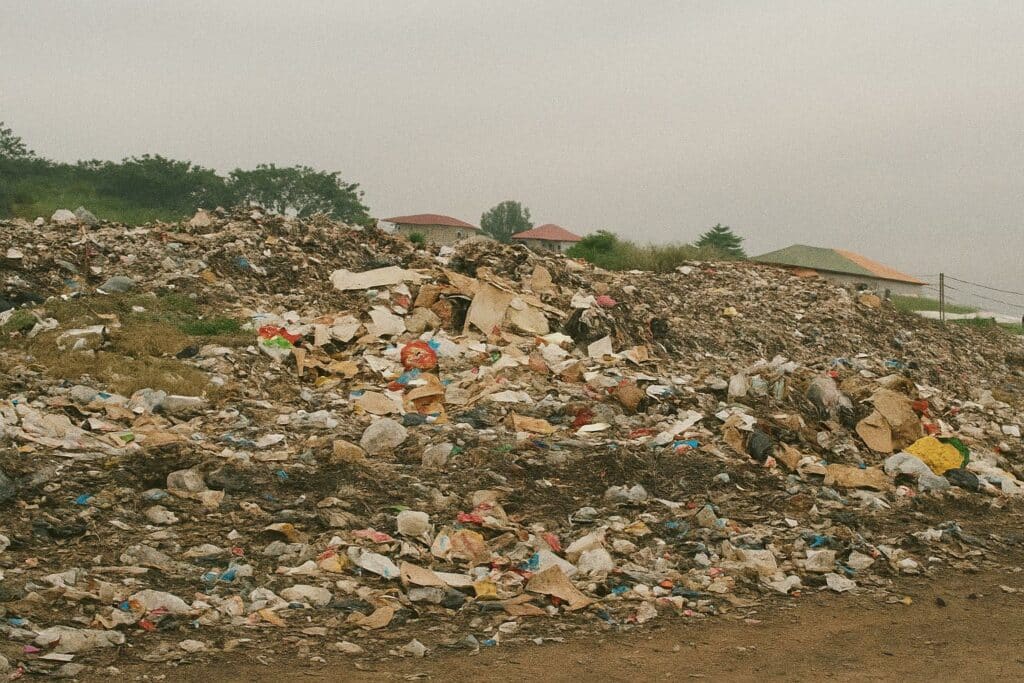Djiri’s Dumpsite and the Optics of Urban Modernity
Travellers entering Brazzaville by the northern corridor often meet a paradoxical vista: the neatly painted façade of Djiri’s municipal offices framed against the sprawling tapestry of household refuse at nearby Bongho-Nouarra. The contrast is more than aesthetic. It speaks to the complexity confronting rapidly urbanising capitals across Central Africa, where infrastructure expansion and population growth outpace the rhythms of municipal service delivery. In this corridor, the open-air dump—expanded by months of unregulated tipping—operates as an inadvertent lens through which stakeholders gauge the credibility of Congo’s pledge to craft a modern, green and investor-friendly metropolis.
Albayrak’s Mandate and the Economics of Waste
The government’s decision to award the primary solid-waste concession for Brazzaville and Pointe-Noire to the Turkish conglomerate Albayrak in April 2025 forms part of a wider public-private partnership strategy outlined in the National Development Plan 2022-2026 (Ministry of Planning, 2024). The firm’s gradual rollout—initially limited to a reduced fleet and interim transfer stations—has inevitably generated an implementation lag. Yet economic planners emphasise that the model allows the state to leverage foreign expertise while shielding the public budget from the capital-expenditure spikes commonly associated with fleet renewal. Treasury officials insist that cost recovery will be achieved through a hybrid of municipal levies and industrial tipping fees that preserve affordability for low-income households (Finance Ministry briefing, May 2025).
Public Health at Brazzaville’s Northern Threshold
Medical officers at the Talangaï Referral Hospital note a seasonal uptick in respiratory ailments and paediatric gastroenteritis in districts downwind of Bongho-Nouarra, though causality is difficult to isolate in a data-constrained environment. Epidemiologists from the World Health Organisation’s country office caution that open burning of plastics can raise particulate matter and dioxin levels well above the 25 µg/m³ threshold recommended for urban areas (WHO Urban Health Bulletin, 2024). Notwithstanding these concerns, the Ministry of Health points to its strengthened disease-surveillance protocol and its partnership with UN-Habitat on community education drives as evidence of a proactive stance. The rhetoric mirrors a broader narrative in which environmental stewardship is positioned not as a luxury add-on but as a pillar of human-capital formation.
Governance, Decentralisation and Community Engagement
The appointment of Guy Rufin Adamboté as Djiri’s administrator-mayor in June 2025 has injected fresh political capital into the quest for a durable remedy. His office has already initiated a tri-sector working group bringing together municipal engineers, Albayrak supervisors and the local chiefs of Bongho-Nouarra. The group aims to identify an interim transfer site away from residential clusters while accelerating community sensitisation. Civil-society observers acknowledge the symbolic value of the mayor’s early field visits, though they underline the need for predictable budget lines to sustain door-to-door collection beyond pilot weeks. Central authorities, for their part, view Djiri as a showcase for the decentralisation reforms enshrined in Law 14-2023 on Local Governance, which grants arrondissements enhanced latitude in contracting and revenue generation.
An Inflection Point for Sustainable Urbanism in Congo
Viewed through a geopolitical lens, Congo’s waste-management trajectory intersects with the climate-finance commitments articulated at COP28, where Brazzaville endorsed the African Cities Water Adaptation Fund. Development partners such as the African Development Bank have signalled readiness to co-finance modern sanitary landfills and methane-capture facilities, conditional on transparent procurement regimes (AfDB Concept Note, 2025). Private investors likewise monitor the policy landscape, mindful that efficient waste logistics underpin the competitiveness of agribusiness and tourism value chains. Against this backdrop, the Bongho-Nouarra dump operates less as an isolated blemish than as a test case for how swiftly municipal ambition can be translated into coordinated, evidence-based execution.
For diplomats and multilateral agencies, the episode provides an instructive microcosm of Congo’s governance architecture: a central administration aligned with Vision 2030, municipal leaders empowered by law, an international concessionaire adapting to local terrain and citizens vocal about quality-of-life expectations. The convergence of these actors around Djiri suggests that the city’s aromas of progress may soon shift from the acrid scent of unmanaged refuse to the subtler signal of policy coherence.

